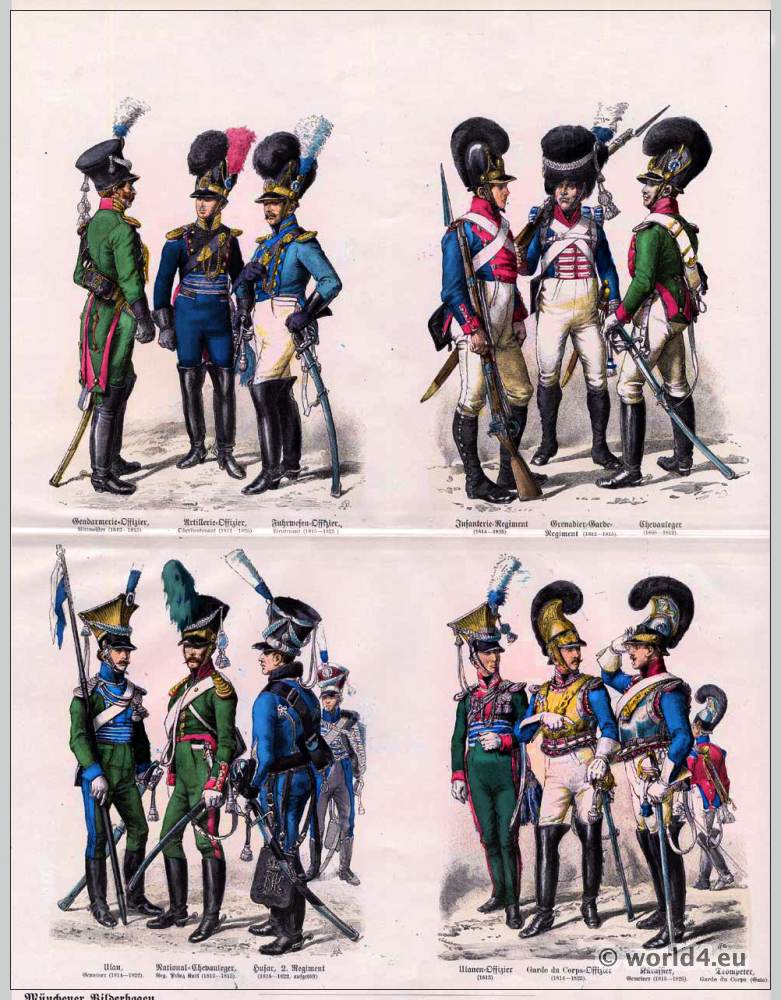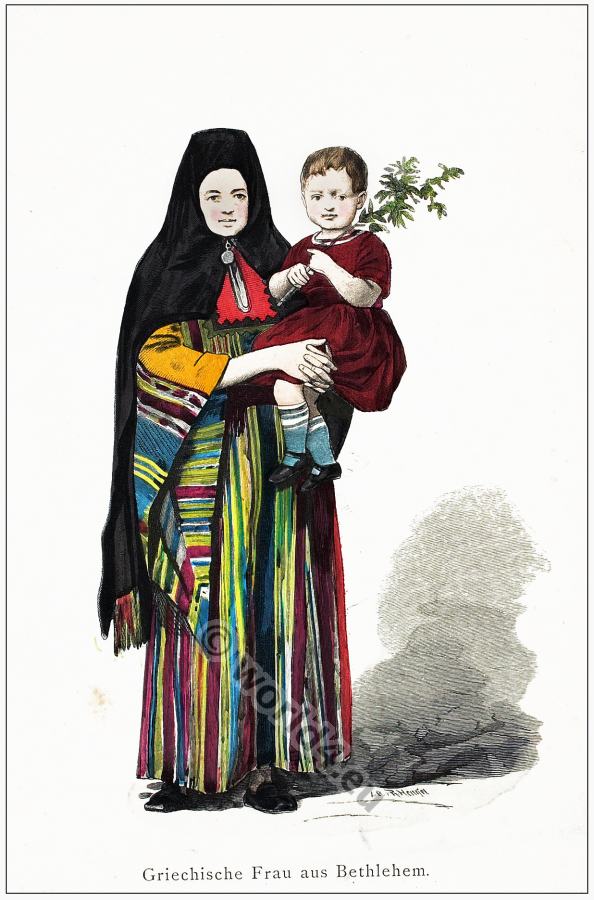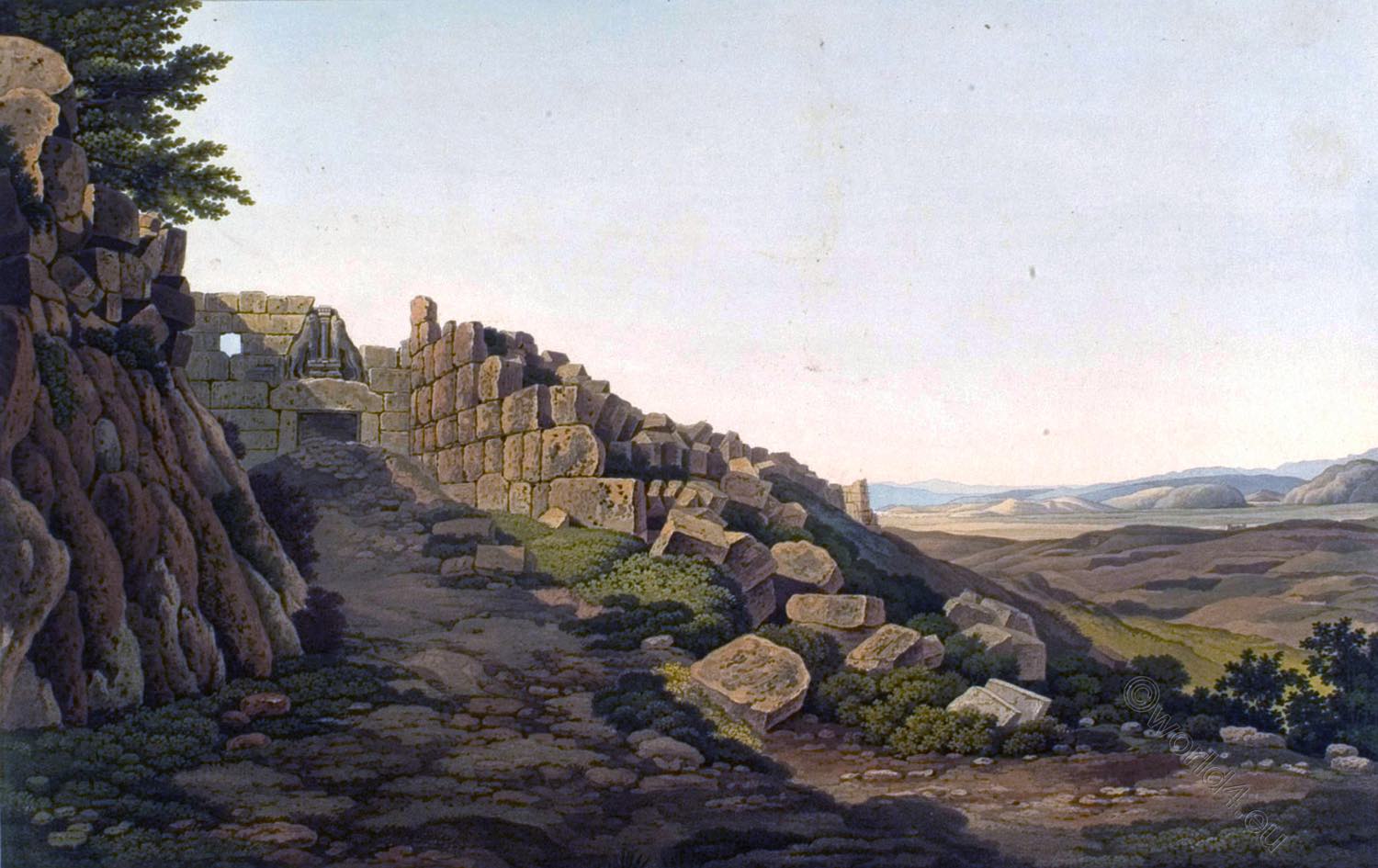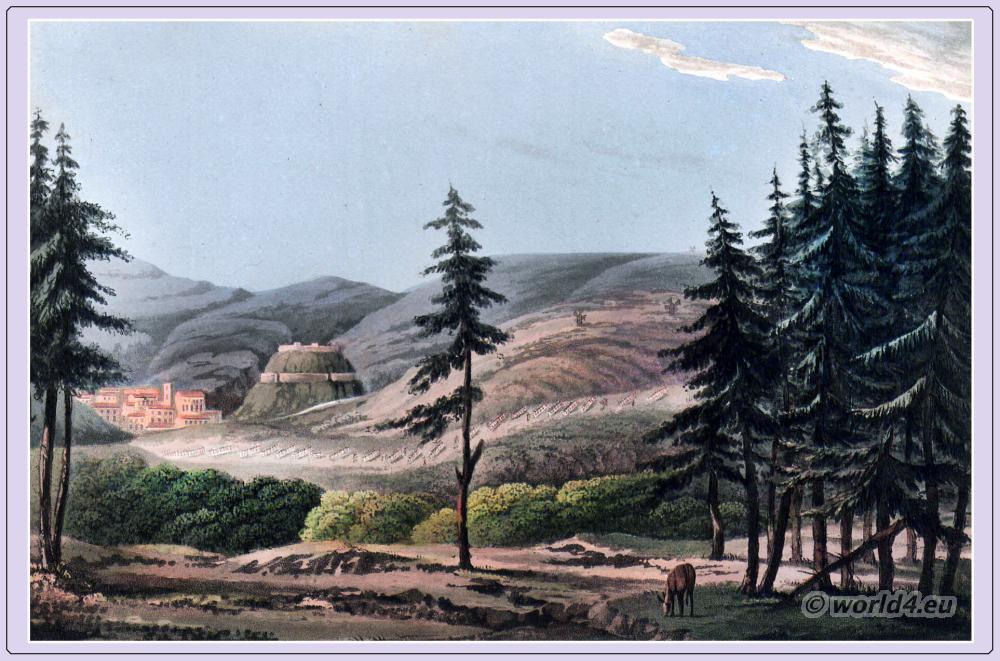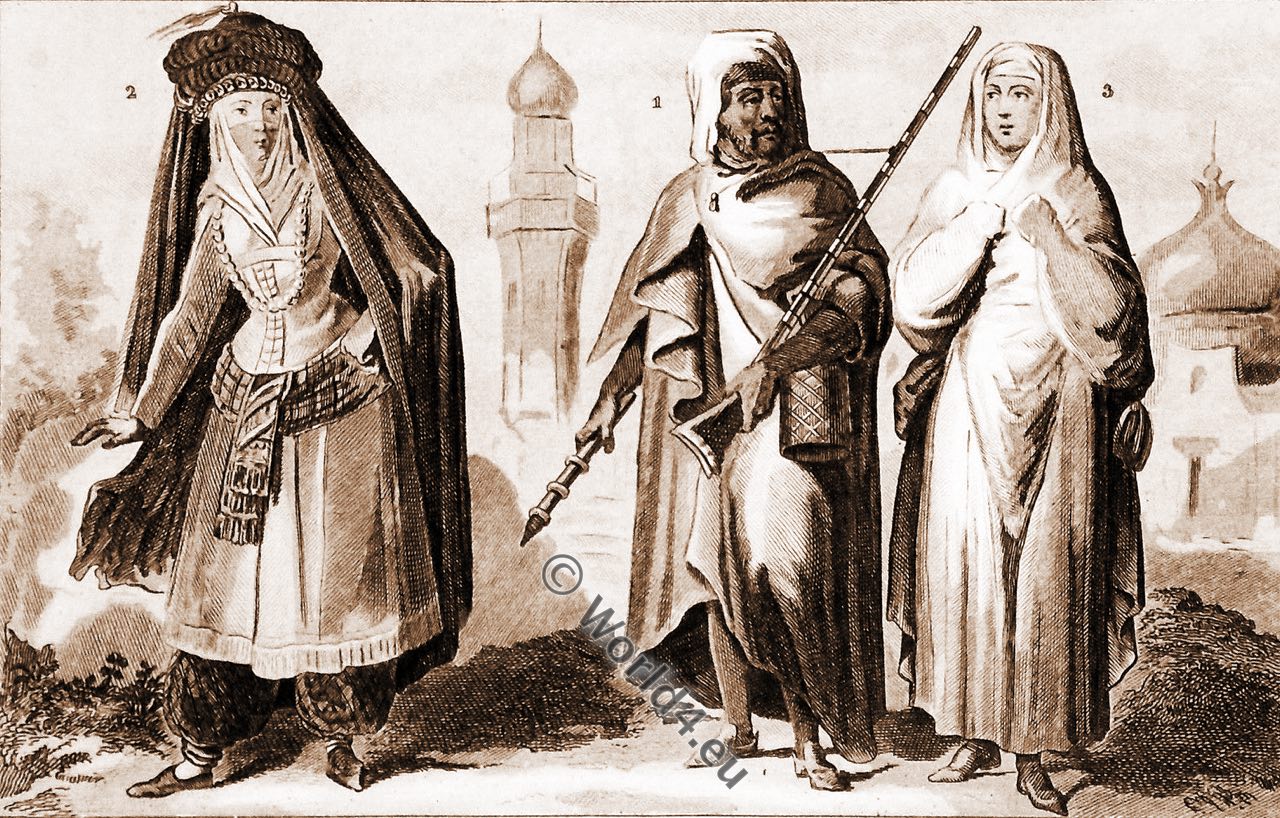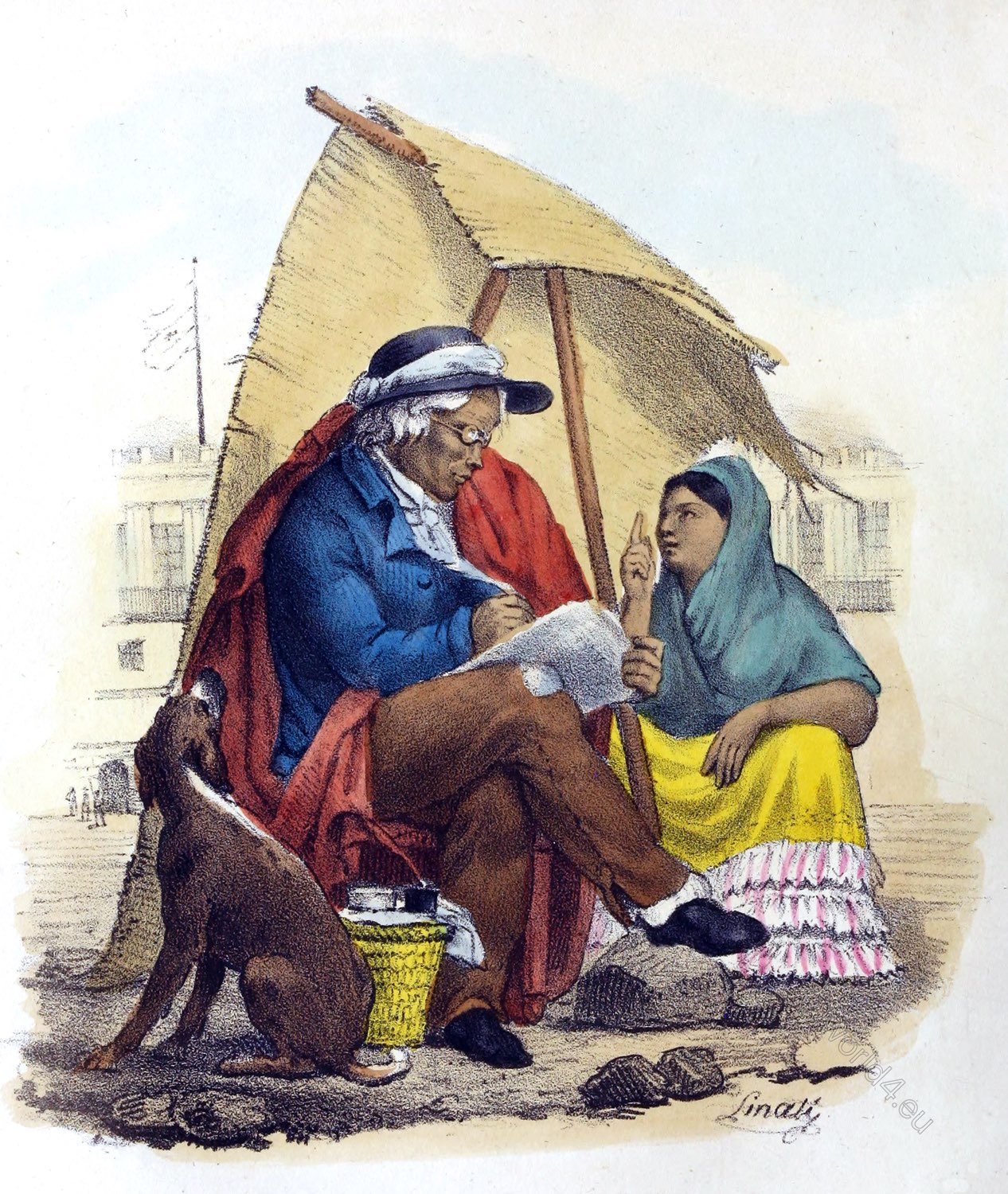
PUBLIC SCRIBE.
Plate 9
Mexican women do not only lay down their secret thoughts and the confession of their weaknesses at the foot of the altars; since few of them can put their heartaches and the agonies of jealousy on paper, they turn to the public writer sitting in the middle of the big square in Mexico City, where he has only the meagre shelter of his petate (rush mat) to protect him from the sun.
As a rule, he is a Spaniard whom fortune has not favoured in the New World, which is about the same as a certificate of bad behaviour. He is reduced to the profession of clerk, and possesses the secret of many households, the thread of many loves, and the secret of many infidelities; how many humble addresses, how many petitions, how many transactions do not pass through his hands? It seems as if he were the cliff on which all the gossip of the city shatters.
Despite the modest appearance of his establishment, it was enough to bring him prosperity. The sale of ink, sharpened quills, seal letters, songs and laments increased his income, and the profession of public writer in a country that would be black on Baron Dupin’s map certainly had its conveniences.
Écrivain public, sur la grand place à Mexico.
ÉCRIVAIN PUBLIC.
Ce n’est pas seulement au pied des autels que les femmes mexicaines déposent leurs secrètes pensées et l’aveu de leurs faiblesses; peu d’entre elles sachant confier au papier les peines de leur cœur et les tourmens de la jalousie, elles ont recours à l’écrivain public établi au milieu de lagrande place de Mexico où il n’a pour se garantir des feux du soleil que le chétif abri de son petate (natte de jonc). C’est d’ordinaire un Espagnol à qui la fortune n’a pas souri dans le nouveau monde, ce qui équivaut à peu près à un certificat de peu de conduite. Réduit au métier de barbouilleur de papier, il possède le secret de bien des ménages, le fil de bien des amourettes, le mystère de bien des infidélités; que d’humbles adresses, que de pétitions, que d’affaires ne passe-t-il pas par ses mains? on dirait qu’il est l’écueil contre lequel viennent se briser tous les cancans de la ville.
Malgré l’humble apparence de son établissement , il suffit pour lui procurer l’aisance. La vente de l’encre des plumes taillées des pains à cacheter, des chansons et des complaintes, grossit ses revenus, et, au résumé, le métier d’écrivain public dans un pays qui figurerait en noir dans la carte du baron Dupin, ne laisse pàs que d’avoir ses agrémens.
Son costume à demi européen démontre son origine espagnole. La jeune créole assise à côté de lui, à la mode du pays, a renoncé au tapalo; le mouchoir de Casimir ou de crêpe de Chine le remplace et couvre sa tête et ses épaules car si la mode française a étendu son empire sur toute, la toilette des personnes d’une certaine aisance, elle n’a pas envahi la coiffure, car aucun n’oserait entrer dans le temple de Dieu avec la tête ombragée d’un immense chapeau comme en Europe.
Costumes civils, militaires et réligieux du Mexique. Dessinés d’après nature par Claudio Linati (1790-1832). Publisher Bruxelles: C. Sattanino; imprimés à la Lithographie royale de Jobard 1828.
Continuing

